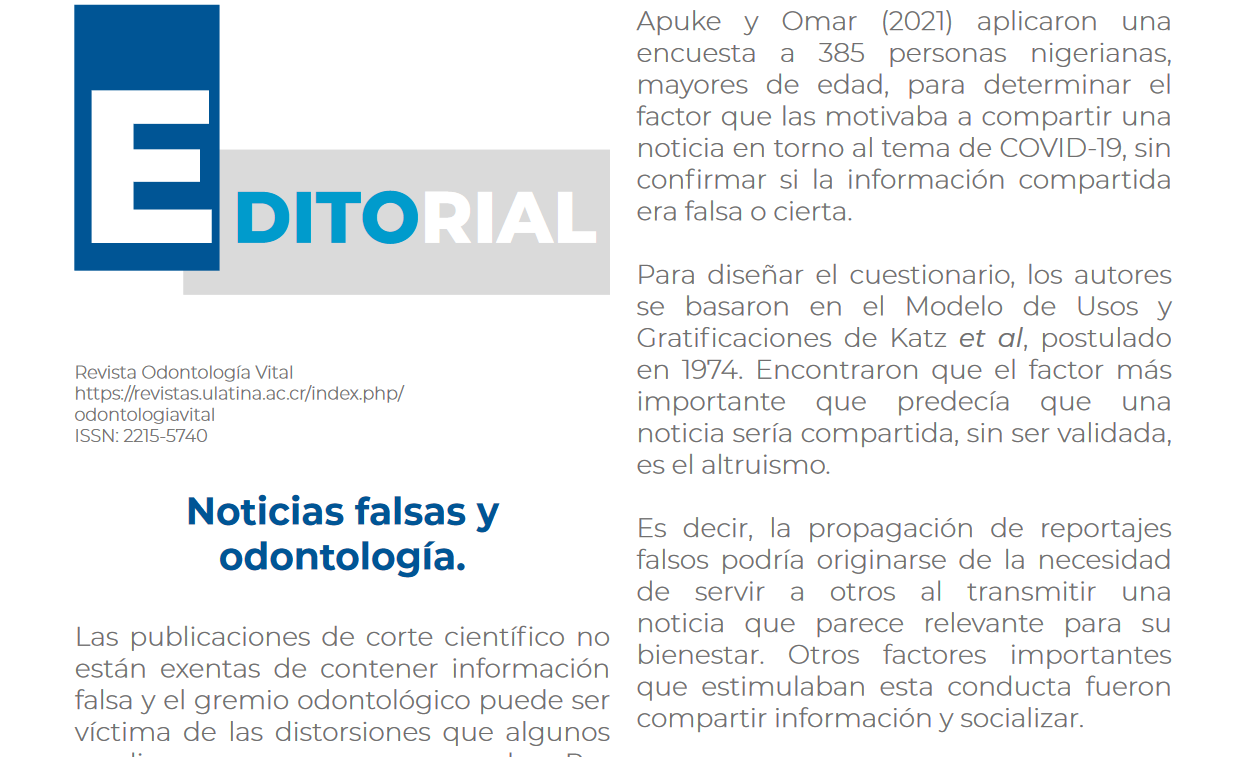Fake news and dentistry
DOI:
https://doi.org/10.59334/ROV.v1i36.494Keywords:
EditorialAbstract
Scientific publications are not exempt from containing false information, and the dental profession can be a victim of the distortions that some media promote on their networks. On the other hand, truthful publications, focused on data, do not seem to provoke the same interest in readers, despite disseminating reliable and relevant findings. Thus, the scientific community is faced with the dilemma of how to disseminate valuable and timely knowledge that fights against misinformation.
Downloads
References
Al Khaja, K. A. J., AlKhaja, A. K., & Sequeira, R. P. (2018). Drug information, misinformation, and disinformation on social media: a content analysis study. Journal of Public Health Policy, 39(3), 343–357. https://doi.org/10.1057/s41271-018-0131-2
Apuke, O. D., & Omar, B. (2021). Fake news and COVID-19: modelling the predictors of fake news sharing among social media users. Telematics and Informatics, 56, 101475. https://doi.org/10.1016/j.tele.2020.101475
Dias Da Silva, M. A., & Walmsley, A. D. (2019). Fake news and dental education. British Dental Journal, 226(6), 397–399. https://doi.org/10.1038/s41415-019-0079-z
Jacob, M. (2021). Communicating a Scientific Story. Journal of Dental Research, 101(4), 371–373. https://doi.org/10.1177/00220345211049387

Downloads
Published
License
Copyright (c) 2022 María José Rodriguez

This work is licensed under a Creative Commons Attribution 4.0 International License.
Authors who publish with Odontología Vital agree to the following terms:
- Authors retain the copyright and grant Universidad Latina de Costa Rica the right of first publication, with the work simultaneously licensed under a Creative Commons Attribution 4.0 International license (CC BY 4.0) that allows others to share the work with an acknowledgement of the work's authorship and initial publication in this journal.
- Authors are able to enter into separate, additional contractual arrangements for the non-exclusive distribution of the Odontología Vital's published version of the work (e.g., post it to an institutional repository or publish it in a book), with an acknowledgement of its initial publication.
- Authors are permitted and encouraged to post their work online (e.g., in institutional repositories or on their website) prior to and during the submission process, as it can lead to productive exchanges, as well as earlier and greater citation of published work.






